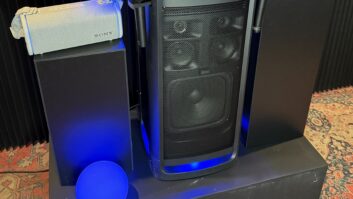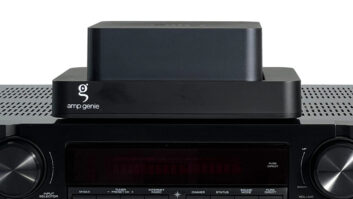In what is becoming a virtual CES tradition, Sony introduced another new digital video format in a pair of ultra-compact camcorders it will sell in conjunction with its existing camcorder formats.
Unlike miniDV or Digital 8mm, which Sony introduced three years ago, the new format — called MicroMV, uses standard MPEG 2 compression to record moving and still images. The previous formats record a DV signal with a lower compression ratio.
Using MPEG 2, which creates smaller file sizes, Sony could shrink the videotape cassette to the size of a matchbox, enabling Sony to design a camcorder “about 70 percent smaller than typical camcorders,” or small enough to carry in a shirt pocket.
By making a camcorder “ultra-portable,” Sony believes it can revitalize consumer interest in videotaping, and help return sales growth to a category that has been flat since last year.
“The typical consumer uses a camcorder once a month for about an hour and then puts it back into the closet,” said Al Jason, Sony camcorder marketing manager. “One way to change this was to develop a camcorder that is very, very different. Our MicroMV camcorders are the world’s smallest (roughly four-inches high by two inches wide) and lightest (13 ounces).”
Jason said that a tiny camcorder is something consumers will be more likely to bring with them all the time, they way many people now carry some ultra-compact digital still cameras.
The new models include the DCR-IP5 ($1,299 suggested retail) and DCR-IP7 ($1,699 suggested retail). The higher-end DCR-IP7 also includes Bluetooth technology, for wireless connections to the Internet and data transfers. It also includes Memory Stick flash memory storage for still images.
MicroMV tapes will store up to 60 minutes of full motion video, and the camcorders use a single recording and playback speed. Each tape will incorporate a tiny memory chip that will store information about the tape, such as time and date and time remaining on the tape. It can also be used to index scenes to rapidly advance to a particular spot on a recording.
Jason said the introduction of MicroMV does not spell the end for any of its current tape formats, including analog Hi8 models, which continue to represent the bulk of Sony’s business. Although as prices continue to decline in digital models, “we might see some of the lower-end analog stuff going away a couple of years from now.”
MicroMV is expected to appeal more to regular PC users than miniDV and D8, but Jason said Sony does not consider MicroMV a step-up from its miniDV models, even though miniDV has been positioned as a step-up from D8.
The Bluetooth wireless technology on the model DCR-IP7 will allow connection to the Internet via a Bluetooth enable cellular phone or using an optional cellular phone adapter. Users can then browse the Internet, send or receive email, and send or receive images and short video clips.
Sony plans to distribute the MicroMV camcorders to approximately 2,000 retail points of sale starting in mid-February.













